Finding the Chesapeake’s dead zone
Researchers on board the Rachel Carson search for the low-oxygen water that troubles marine life.
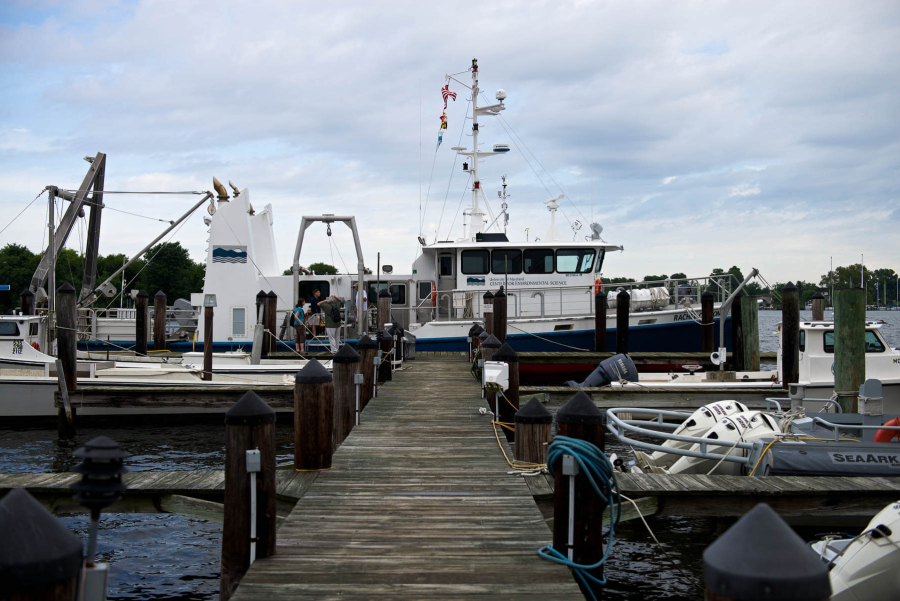
The R/V Rachel Carson is docked on Solomons Island. At 81 feet long, the red and blue research vessel stands out against the deadrise workboats that share the Patuxent River marina. Her mission today is to lead researchers from the University of Maryland Center for Environmental Science (UMCES) to the Chesapeake Bay’s dead zone.
Every summer, this so-called “dead zone” forms in the main stem of the Bay. The area of low-oxygen water is created by bacteria as they feed on algae blooms growing in nutrient-rich water. The dead zone persists through the warm summer months because the Bay is stratified into two layers: a surface layer of lighter, fresher water that mixes with the atmosphere, and a bottom layer of denser, saltier water, where oxygen depletion persists. These layers won’t mix until the cooler temperatures of autumn allow the surface waters to sink.
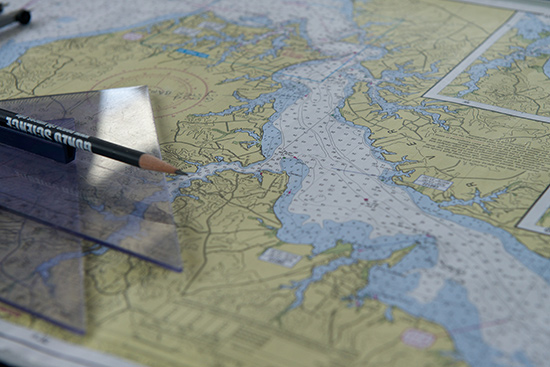
To find the dead zone, Director of Marine Operations and Rachel Carson Captain Michael H. Hulme takes us to one of the deep troughs that run down the center of the Bay. Geologic remnants of the ancient Susquehanna River, these troughs can reach up to 174 feet deep in an estuary whose average depth is just 21 feet. Hulme anchors offshore of Calvert Cliffs State Park.
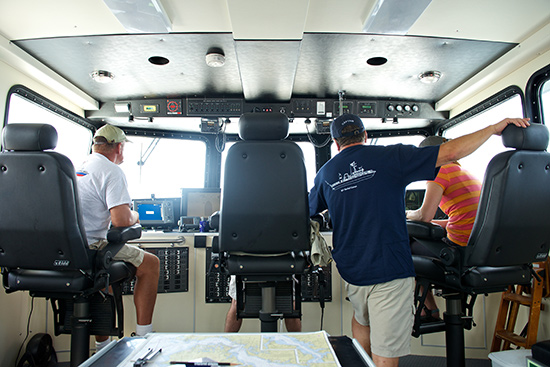
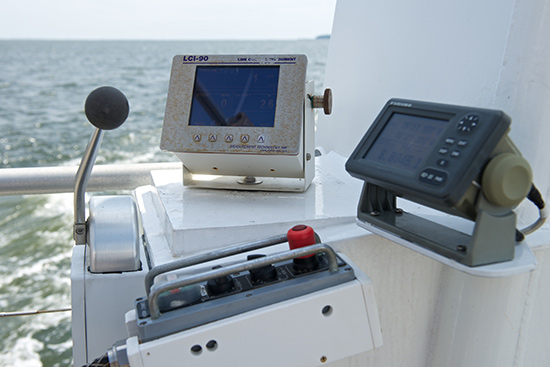
The boat is equipped with a dynamic positioning system, which holds it in place regardless of wind or waves. This allows the captain to step away from the helm and offer his hands on deck. “Being able to hover over that [specific] latitude and longitude is what makes the Rachel Carson so unique,” said Hulme. It’s also one of the reasons the vessel is so useful to scientists, who often return to the same sampling site again and again over time.
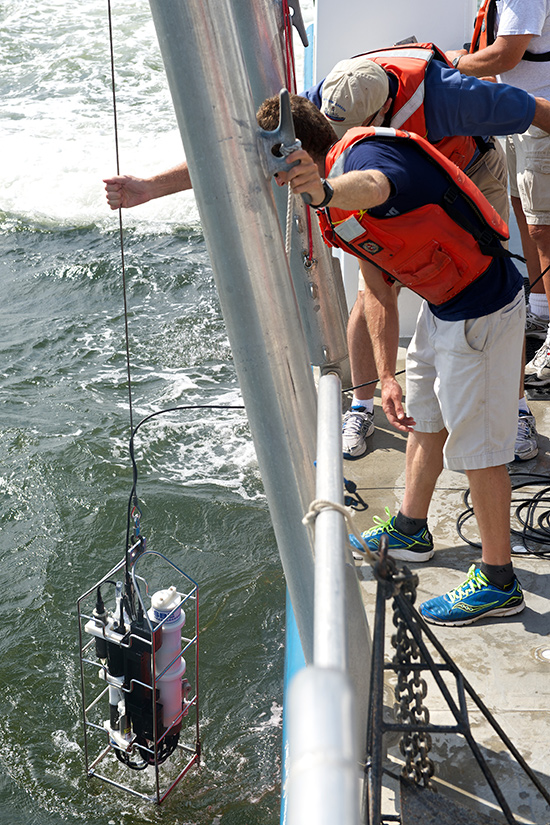
UMCES Senior Faculty Research Assistant David Loewensteiner drops a CTD overboard. The oceanography instrument takes eight measurements per second, tracking conductivity, temperature and depth as it is lowered through the water. Connected to the ship with a cable, the CTD sends data to a laptop in the boat’s dry lab. We measure 2.04 mg/L of dissolved oxygen in surface water, and just 0.33 mg/L at 98 feet deep. Critters need concentrations of 5 mg/L or more to thrive; these are “classic dead zone” conditions.
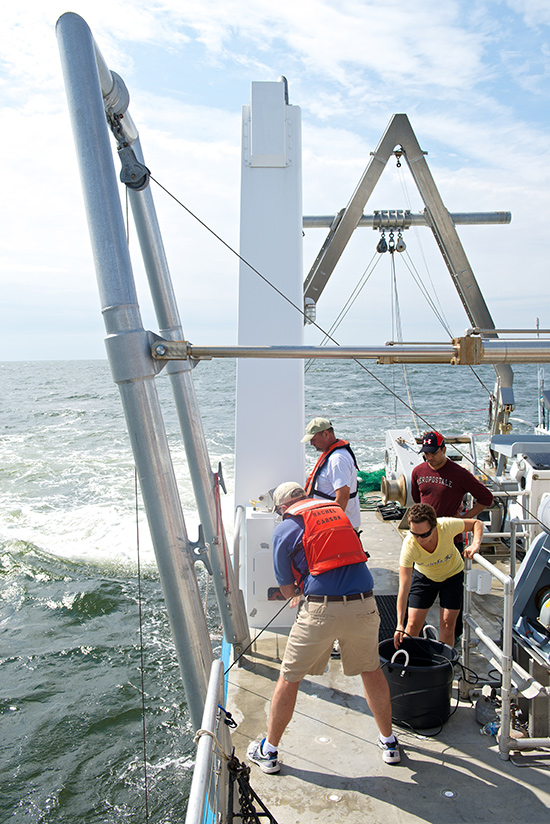
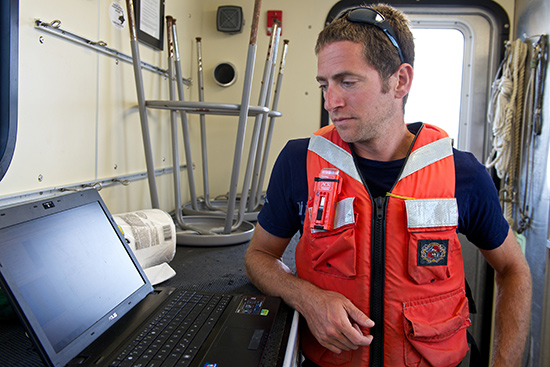
Dead zones are bad for the Bay. Like animals on land, underwater critters need oxygen to survive. In a dead zone, immobile shellfish suffocate and those fish that can swim are displaced into more hospitable waters. “If you were a self-respecting fish and oxygen was [low], what would you do?” asked Bill Dennison, Vice President for Science Applications and Professor at UMCES. “Swim away.”
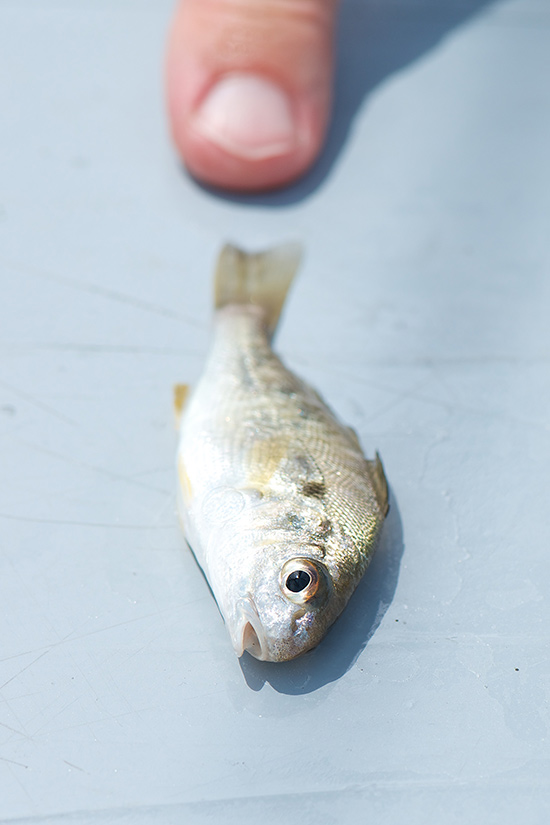
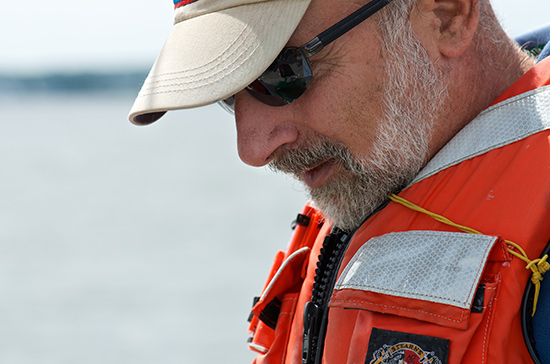
First reported in the 1930s, the appearance of the dead zone in the Bay is linked to our actions on land: as we replace forests with cities, suburbs and farms, we increase the amount of nutrients entering rivers and streams. This fuels the growth of algae blooms that lead to dead zones. “Hypoxia [or low-oxygen conditions] is driven by what we do on the watershed,” said UMCES Assistant Professor Jeremy Testa. “The Bay is naturally set up to generate hypoxia because of that [stratification] feature. That said… when there were no people here, there was not much hypoxia.”
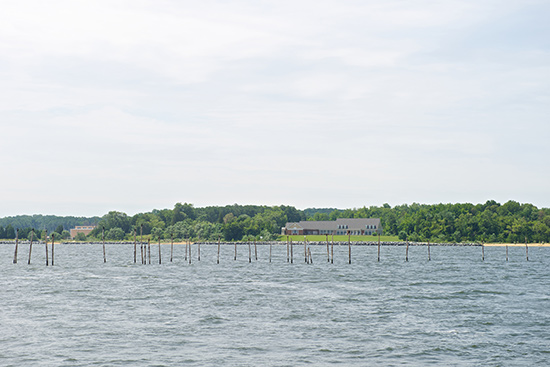
While it is our actions on land that created the dead zone, it is our actions on land that can make the dead zone go away. Research has shown that certain pollution-reducing practices—like upgrading wastewater treatment plants, lowering vehicle and power plant emissions and reducing runoff from farmland—can improve the health of local rivers and streams. Scientists have also traced a decline in the duration of the dead zone from five months to four, which suggests that conservation practices gaining traction across the watershed could have very real benefits for the entire Bay.
Images by E. Guy Stephens/Southern Maryland Photography. Captions by Catherine Krikstan.

Comments
Great article on a most important subject! Thanks for the story and all the photos!
Great essay! Thanks for sharing all the information and great photos.
Thank you!
Your comment has been received. Before it can be published, the comment will be reviewed by our team to ensure it adheres with our rules of engagement.
Back to recent stories